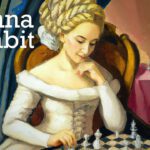We presenteren een tot nu toe ongepubliceerd uittreksel uit het dagboek van Jonathan Harker dat vermoedelijk door zijn redacteur, de heer Bram Stoker, uit het definitieve manuscript van Dracula is weggesneden, samen met het bekende fragment Dracula’s Guest, omdat de roman te lang was.
Het werd terug gevonden door Tim Harding en voor het eerst gepubliceerd in het tijdschrift Chess (december 1978).
Frankenstein tegen Dracula op het schaakbord
14 mei. Middernacht – Ik had weer een lang gesprek met de graaf en hoorde tot mijn opluchting dat hij een fervent schaakspeler is. Niemand die plezier schept in dat nobele spel kan toch helemaal slecht zijn? Ik moet enkele van mijn aannames over de man herzien.
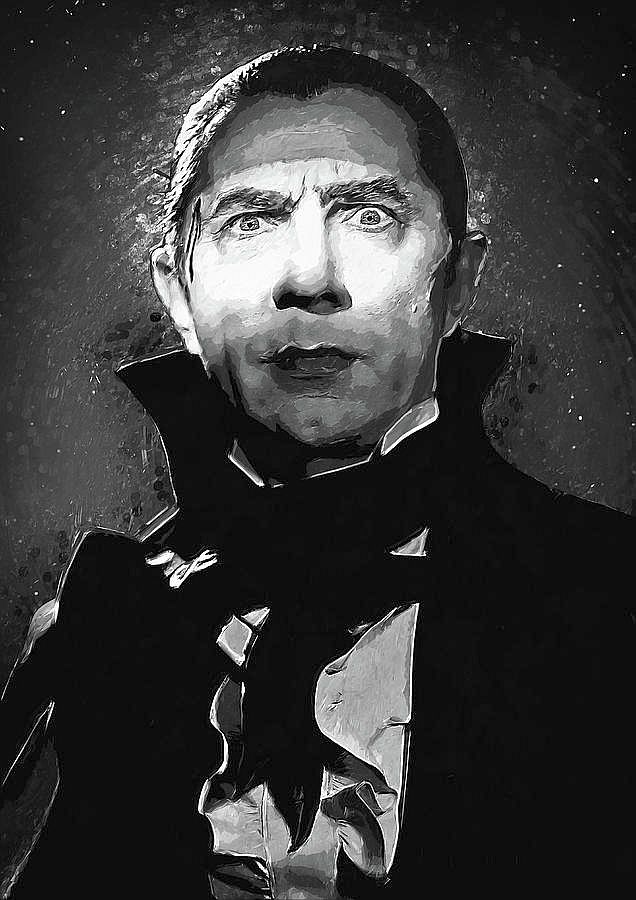
Later – De graaf vertelde me dat er morgen een schaaktoernooi wordt gehouden, niet ver hier vandaan in een herberg bij de Borgopas. Hij zou zelf meedoen, zei hij, en hij bood aan mij als toeschouwer mee te nemen. Ik stemde gemakkelijk toe.
De volgende dag — We zijn gearriveerd, na een ruige rit over de mistige pas in de koets van de graaf! Soms kon ik wolven horen huilen op slechts een steenworp afstand van ons voertuig. Waarom moeten we ’s nachts reizen – en met zoveel koffers en andere bagage?
De graaf leek helemaal niet ontdaan door de vreemde en griezelige geluiden, maar hij trok zijn mantel strakker om zijn schouders voor warmte – totdat ik zou zweren dat hij op een gigantische vleermuis leek!
Hij zei op een toon van verrukking: “Ah, de kinderen van de nacht! Wat een muziek maken ze!“

Knock-out toernooi
Ik drong er bij de graaf op aan me meer te vertellen over deze schaakwedstrijd. Ik leerde dat het niet werd gehouden volgens het all-play-all of Zwitserse systeem waarmee ik in Engeland bekend was, maar dat het een ouderwetse ‘knock-out’ was, zoals het toernooi van Staunton in 1851 in Londen. De graaf was geïnteresseerd in onze nieuwe toernooivormen, maar betwijfelde of ze ooit populair zouden worden in zijn deel van de wereld: “Onze tradities zijn sterk; we wantrouwen de nieuwe. Bovendien heeft het knock-outsysteem bepaalde voordelen vanuit ons oogpunt…“
De wind overstemde zijn volgende opmerking, maar er leek een sinistere toon in te zitten.
De Borgo Open
Toen we de herberg naderden, legde de graaf uit dat de Borgo Open een jaarlijks terugkerend evenement was waarvan hij beschermheer was, en daarom had hij me overdag niet kunnen vermaken; er waren administratieve details om op te letten … Hij was echter (zoals ik heb begrepen al vele jaren) de titelhouder, wat hem vrijstelde van spelen in voorrondes. Als de andere spelers hun knock-out hadden voltooid, zou de winnaar de volgende avond tegen de graaf spelen.
Later – Bij aankomst hoorden we dat de uitdager van dit jaar een buitenlandse concurrent zou zijn (uit Beieren, of was het Zwitserland?) – een geducht klinkend personage met de naam Herr Frank N. Stein-Münster. Uit de opwinding in de herberg bij onze aankomst, maakte ik op dat er een interessantere wedstrijd verwacht werd dan in de afgelopen jaren.
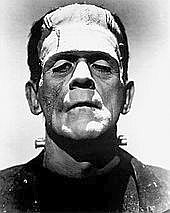
De graaf verdween uit zicht, terwijl ik voor mezelf een maaltijd bestelde en met de huisbaas in gesprek ging.
“Elk jaar, zolang ik me kan herinneren,” zei hij, “heeft de graaf de wedstrijd met groot gemak gewonnen. Maar dit jaar is de uitdager iets speciaals. Hij steekt met kop en schouders boven zijn rivalen uit, hij heeft ze levend opgegeten. – met een speciale opening die hij in Wenen heeft geleerd, zeggen ze.“
Ik dacht bij mezelf dat de graaf zeker niet onvoorbereid zou zijn op iets nieuws, maar hield me aan mijn eigen raad; Ik mag mijn gastheer niet ontrouw zijn!
De volgende dag – Wat een verhaal heb ik te vertellen! Allen namen plaats bij de schaaktafel, waar iedereen zo goed mogelijk zicht had op het bord en de klok. Toen kwamen de secondanten binnen; eerst ikzelf, voor de graaf, en daarna, voor zijn mysterieuze tegenstander, een vrome Nederlandse professor, ene dr. Abraham van Helsing. Toen, en ik kon een stilte horen toen iedereen in de kamer was, kwam de graaf binnen en ging achter de zwarte stukken zitten. Eindelijk verscheen de Duitser, een lelijke reus van een man, die iedereen boos aankeek en langzaam in de enorme stoel ging zitten die speciaal voor hem was gemaakt.
Zonder oponthoud begon het spel, waarbij beide spelers hun zetten snel en zelfverzekerd deden. Ze volgden de eerdere wedstrijden van de heer Stein-Münster met wit in het evenement. Hier zijn ze, zodat je het spel zelf kunt volgen (de graaf is natuurlijk zwart):
De andere partijen gespeeld door Frank N. Stein-Münster:
In de eerste ronde had Stein-Münster de witte stukken gehad tegen een vreemdeling die afkomstig was uit de Russische steppen, W. Wolf.
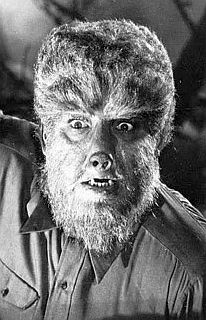
Hij was in alle opzichten een harige kerel geweest, en dat gold ook voor het spel, in al zijn beknoptheid. Uit het diagram speelde Wolf:
In ronde drie bereikte Stein-Münster opnieuw de positie in het diagram. De zwartspeler was echt zwart – een enorme mulat genaamd Z. Ombie van het verre Caribische eiland Haïti.
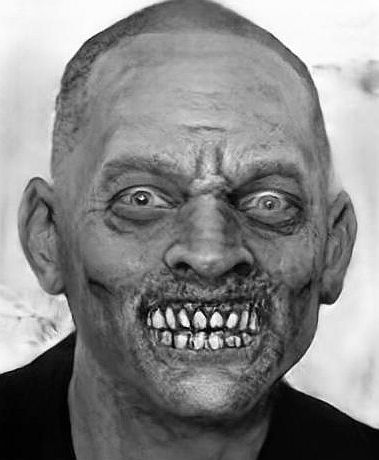
Herr Ombie had zijn huiswerk gedaan en verbeterde zelfverzekerd de manier waarop de Rus omging met het torenoffer door 12…h6 te spelen (in plaats van 12…Lg7). De wedstrijd Stein-Münster v Ombie ging als volgt verder:
In de kwartfinale bereikte Stein-Münster opnieuw met wit de diagramstelling. Deze keer was zijn tegenstander een magere Fransman met een nors voorkomen die zich uitgaf onder de naam Professor Orlac. Op zijn polsen droeg deze man de littekens van een verschrikkelijke operatie. Het gerucht ging dat Orlac ooit een beroemde concertpianist was geweest die, nadat zijn handen onherstelbaar waren beschadigd bij een ongeluk in de Opera van Parijs, naar een gewetenloze dokter was gestuurd die een techniek had bedacht om ledematen en ledematen van de onlangs overledenen op de levenden te enten.
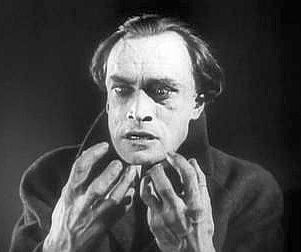
In het geval van Orlac zeiden sommigen dat de duivelse chirurg de handen van een nog niet koude wurger van de guillotine had genomen; een ander vertelde me dat het de handen waren van een schaker die in armoedige omstandigheden was overleden. Dat laatste leek aannemelijker; zeker in zijn dagen als muzikant had Orlac geen talent getoond voor het koningsspel.
Wat de verklaring ook mag zijn, Monsieur Orlac speelde schaak als een blinde. Zittend aan het bord sloot hij zijn ogen en zijn tegenstanders, die hun zetten hadden gespeeld, moesten ze hardop uitspreken. Dan strekte Orlac zijn handen uit over het bord en liet ze zweven totdat plotseling vinger en duim een stuk zouden grijpen en het zouden verplaatsen. Op deze macabere manier werd de wedstrijd tussen Stein-Münster en Orlac gespeeld.
